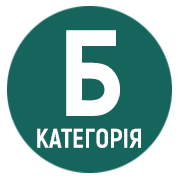ETHNOPSYCHOLOGICAL FEATURES IN THE SHORT PROSE OF V. STEFANYK
DOI:
https://doi.org/10.32782/2412-933X/2025-XXIV-5Keywords:
ethnopsychology, mentality, short prose, speech, space time, images, symbolsAbstract
The article examines the creative originality of V. Stefanyk’s short prose in terms of the implementation of ethno-psychological features of artistic thinking and worldview. The aim of the article is to investigate the implementation and identification of ethnopsychological ideas at the ideological, semantic and formal levels of V. Stefanyk’s short prose. In particular, it examines how the reproduction of the heroes’ perception of reality, the identification of their existential experiences, mental representations, and ethno-psychological manifestations are realized at the level of poetics of the works. It is analyzed how the ideological and semantic load, structural and stylistic component of the characters’ speech reveals the subconscious attitude towards the Earth as a spiritual component of existence, as well as a source of human social well-being. This enhances the dynamic and expressive expression of psychological collisions in speech, through the form of a dialogized monologue, which acquires the properties of a stage embodiment and allows the author to most objectively convey the events in the work. Through dialogized monologues, not only events from the hero’s life are recreated, but also a state of confusion and anxiety, especially from the realization of the loss of connection with the land as property, well-being, etc. It has been determined that folklore images in the discourse of modernism acquire a new semantic content. V. Stefanyk interprets folklore in a unique way. Romantic visions are formed in the text, which also become a source of lyricism in the prose. The intonations of colloquial speech and mournful lyrical intonations are combined, which is reflected in the selection and reproduction of specific sensory images. Obviously, for V. Stefanyk, the architectonics and dynamics of folklore imagery and folk songs revealed archetypal ideas, associations, and motifs through which the structures of the “collective unconscious” were embodied.This becomes one of the defining features of the writer’s artistic thinking, a unique worldview.
References
Голомб Л. Міфологема шляху в творчій самосвідомості Василя Стефаника. Шевченко. Франко. Стефаник : матеріали міжнародної наукової конференції. Івано-Франківськ : Плай, 2002. С. 307–316.
Кульчицький О. Світовідчування українця. Українська душа : зб. наук. праць. Київ : Фенікс, 1992. С. 48–65.
Островська А. Експресіонізм у творчості В. Стефаника : матеріали спецкурсу. Донецьк : Донецький національний ун-т., 2004. 207 с.
Стефаник В. Повне зібрання творів : у 3 т. Київ : Академія наук Української РСР, 1949. Т. І : Новели. 369 с.
Стефаник В. Повне зібрання творів : у 3 т. Київ : Академія наук Української РСР, 1953. Т. ІІ : Автобіографічні твори, поезії в прозі, публіцистика, незакінчені твори і переклади. 224 с.






